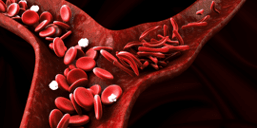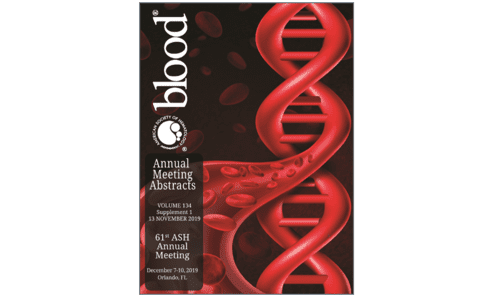Effective drug development programs ideally begin exploring biomarker candidates at the preclinical phase.

Pre-Clinical Validation Testing
Drugs that modify blood function (red blood cell health, thrombosis, WBC activation, etc.) often have corresponding clinical endpoints that are subjective and not easily evaluated in a clinical trial.
Even the best compounds evaluated in the most well-designed clinical trials can be derailed in the absence of biomarkers that can stratify the target population, monitor the effect of the drug, or serve as a surrogate endpoint.
At Functional Fluidics, we understand that effective drug development programs must begin exploring biomarker candidates at the preclinical phase.

Animal or Observational Pre-Clinical study
Whether it is an animal study or an observational study on a target patient population, Functional Fluidics can:
- Assess the efficacy of a drug based on functional markers of blood cell performance
- Refine the mechanism of action of a drug based on in vitro blood function properties
- Measure the pharmacodynamic response to red blood cell-modifying drugs as well as other blood function modifying drugs
- Refine the dose and timing for optimal drug administration and maximum efficacy with minimal detrimental effects on blood cell function
- Guide transition of a drug from in vitro, to animal, to human studies / clinical trials
- Analyze the data from our extensive clinical data database to plan future studies for maximum impact
- Stratify patient sample population and enrich your recruitment through functional biomarker-defined selection criteria


Proprietary Lab Developed Tests
Whether your drug is in preclinical development or it already been approved by the FDA, healthcare providers will need well-validated biomarkers to objectively assess the impact on red blood cell health, and ultimately patient health. Our suite of proprietary cell function assays can help validate assumptions or support clinical claims.
- Flow Adhesion:
Our Flow Adhesion Assays capture the adhesive properties of an individual’s blood cells during conditions that simulate physiologic blood flow. - Mechanical Fragility :
Our Membrane Fragility assay determines the stability of the intact RBC membrane, which indicates the health of the RBC and may predict RBC survival.
To see a full list of tests that Functional Fluidics currently run in our Central Lab click the RBC test menu button
RBC Test MenuFunctional Fluidics Assays
Our suite of proprietary cell function assays can help validate assumptions or support clinical claims.
-

Flow Adhesion of whole blood on VCAM-1 (FA-WB-VCAM)
LEARN MORE -

Flow Adhesion of whole blood on P-Selectin (FA-WB-Psel)
LEARN MORE -

Mechanical Fragility – Normoxia (MF)
LEARN MORE
Evaluation of Longitudinal Pain Study in Sickle Cell Disease (ELIPSIS)

Sickle cell disease (SCD) is characterized by frequent and unpredictable vaso-occlusive episodes (VOEs) that produce severe pain, organ damage, and early death. Lack of reliable biomarkers to objectively define VOEs, hinders the development of clinically useful interventions to improve the care for these patients.
Functional Fluidics recently participated in a ground-breaking study involving sickle cell patients. This non-interventional, longitudinal, 6-month study aimed to develop tools to identify VOCs in SCD patients with or without health care utilization.
The study data suggest that Functional Fluidics FA-WB-VCAM assay may serve as a predictive biomarker for impending VEEs, and a monitoring biomarker to assess response to SCD-modifying therapies.
LEARN MORE
Evaluation of Longitudinal Pain Study in Sickle Cell Disease (ELIPSIS) by Electronic Patient-Reported Outcomes, Actigraphy, and Biomarkers
Functional Fluidics Biomarker Assay Featured in ELIPSIS article in American Society of Hematology (ASH) Blood Magazine
Key Points
- Feasibility of monitored out-of-hospital pain and patient-reported VOC days as endpoints for clinical trials in SCD is demonstrated.
- ePROs, actigraphy, and laboratory biomarkers enable improved identification and assessment of in-hospital and out-of-hospital VOCs.

Publications
Evaluation of Longitudinal Pain Study in Sickle Cell Disease (ELIPSIS) by Electronic Patient-Reported Outcomes, Actigraphy, and Biomarkers
This non interventional, longitudinal, 6-month study aimed to develop tools to identify VOCs in SCD patients with or without health care utilization.
Red Blood Cell Mechanical Fragility as Potential Metric for Assessing Blood Damage Caused by Implantable Durable Ventricular Assist Devices: Comparison of Two Types of Centrifugal Flow Left Ventricular Assist Devices.
Implantable Ventricular Assist Devices (VADs) have become a treatment of choice for patients with end-stage heart failure or cardiogenic shock, significantly increasing both survival rates and the quality of life of patients.
Individual Variability in Response to a Single Sickling Event for Normal, Sickle Cell, and Sickle Trait Erythrocytes
Hemoglobin S (Hb-S) polymerization is the primary event in sickle cell disease causing irreversible damage to red blood cell (RBC) membranes over repeated polymerization cycles.
Sevuparin blocks sickle blood cell adhesion and sickleleucocyte rolling on immobilized L-selectin in a dose dependent manner
Adhesion of sickle red blood cells (SSRBC) to the vascular endothelium may initiate and propagate vascular obstruction in sickle cell disease (SCD)
Impact of Environment on Red Blood Cell ability to Withstand Mechanical Stress.
Susceptibility of red blood cells (RBC) to hemolysis under mechanical stress is represented by RBC mechanical fragility (MF), with different types or intensities of stress potentially emphasizing different perturbations of RBC membranes
An Approach to Measuring RBC Haemolysis and Profiling RBC Mechanical Fragility
Red blood cells (RBC) can be damaged by medical products, from storage or from disease. Haemolysis (cell rupture and haemoglobin release) is often a key indicator, with mechanical fragility (MF) offering the potential to assess sub-haemolytic damage as well
Low Molecular Weight Heparin Inhibits Sickle Erythrocyte Adhesion to VCAM-1 through VLA-4 Blockade in a Standardized Microfluidic Flow Adhesion Assay
The vaso-occlusive events in sickle cell disease (SCD) begin in early childhood, warranting the need for more preventative and therapeutic interventions for those affected
Impact of the Oscillating Bead Size and Shape on Induced Mechanical Stress on Red Blood Cells and Associated Hemolysis in Bead Milling
While in circulation, red blood cells (RBC) need to elastically undergo large deformations without lysing, an ability that may be compromised by cell membrane damage.
